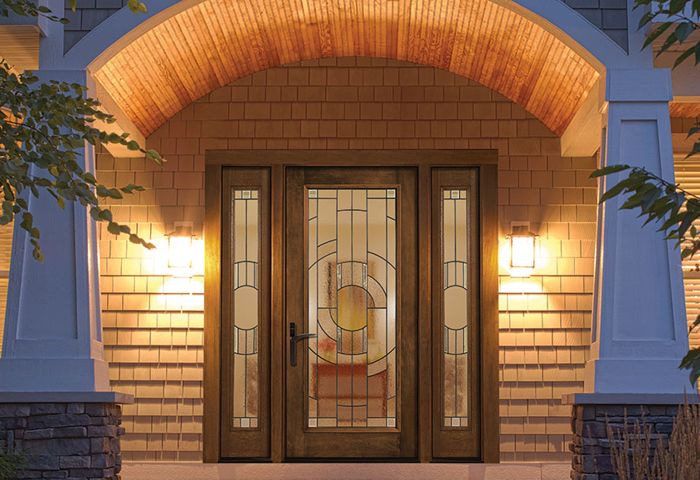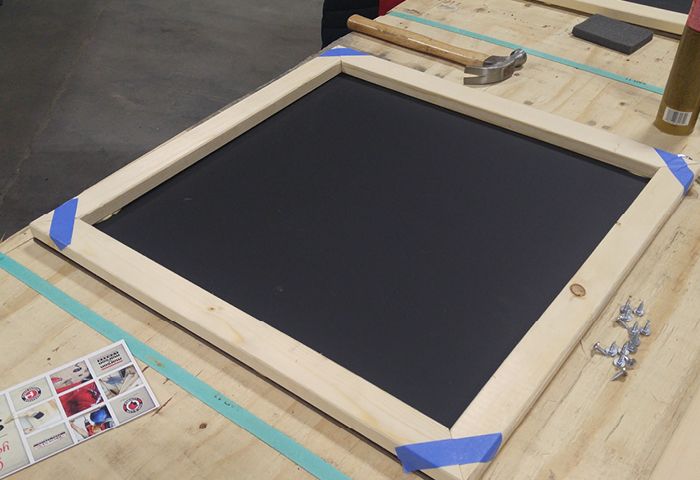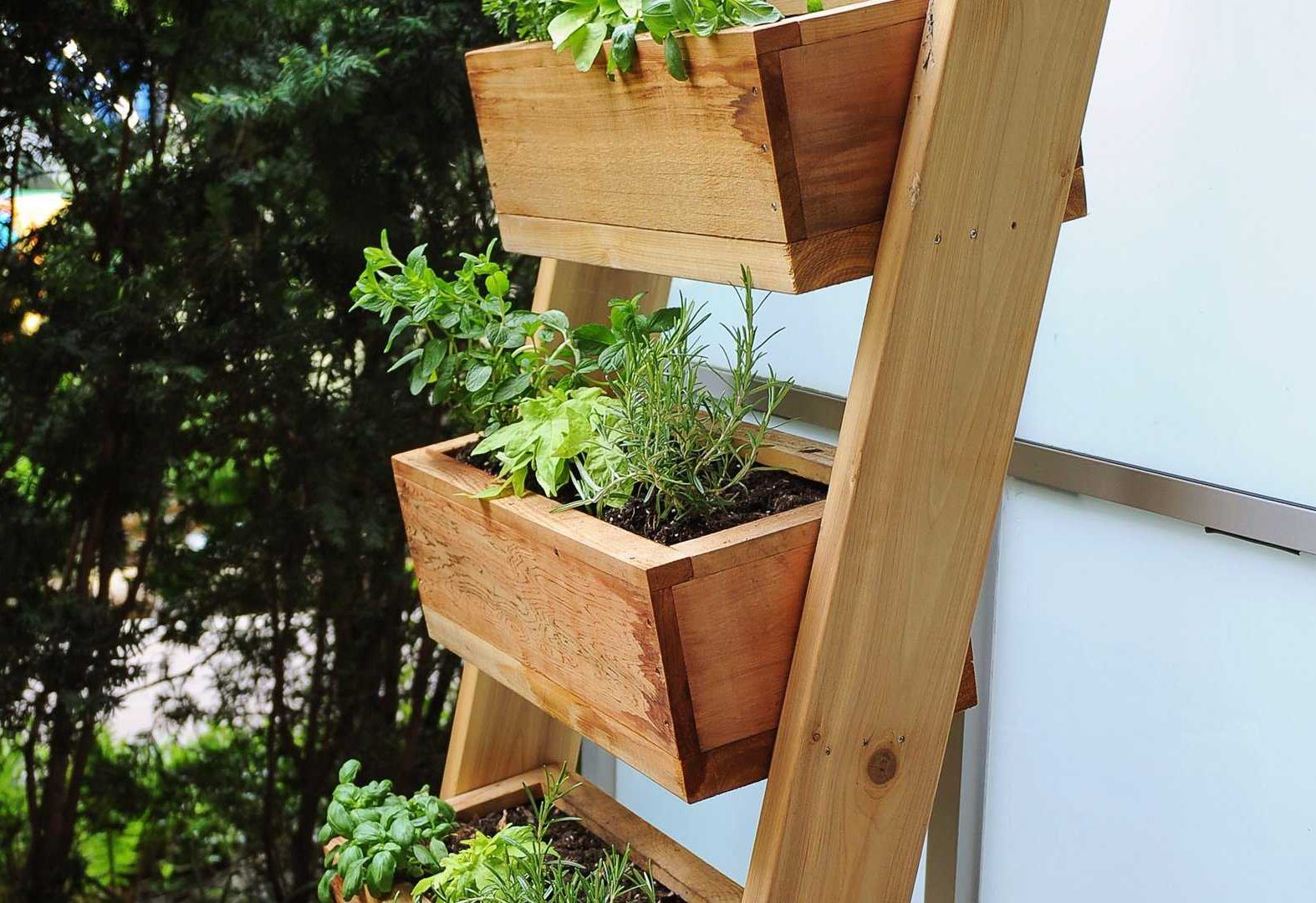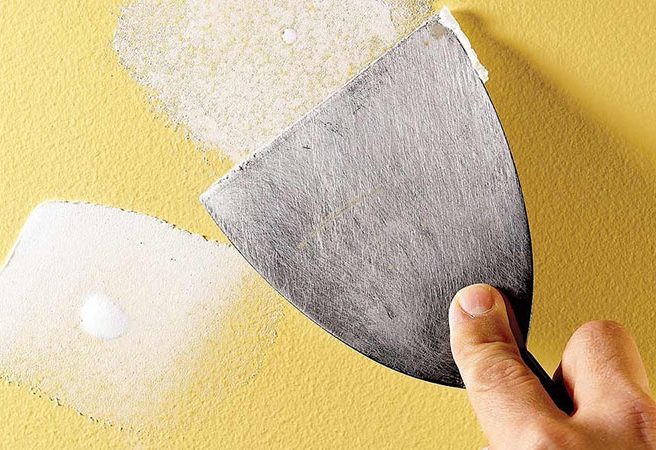What makes the perfect entryway? When you’re thinking of replacing a front door, it’s a timely question.
Our designers took a careful look at some of our most gorgeous, most welcoming exterior doorway projects, and we’re sharing our observations.
While front doors are a key component in each of our favorite entryway designs, it’s that extra, special feature or two that completed a stunning entry and made it stand out from all the others. Somewhere, someone had the skill and know-how to think bigger and transform a task into a vision. If you’re ready for the perfect entryway, here are a few ideas to help you think bigger, too:
1. Lights Create Light—Inside and Out
One of the most common complaints about home interiors is lack of light, especially in hallways. Likewise, from a street view, many front doorways appear dull and static. Vertical side lights or overhead transom lights are ideal ways of opening up dark spaces and adding sparkle and shine. You can add just one side lite panel or two, each matching the height of the door. Side lights and transoms enlarge entry areas, giving a more spacious look and feel. For privacy—and additional visual impact—opt for a patterned or tinted glass.
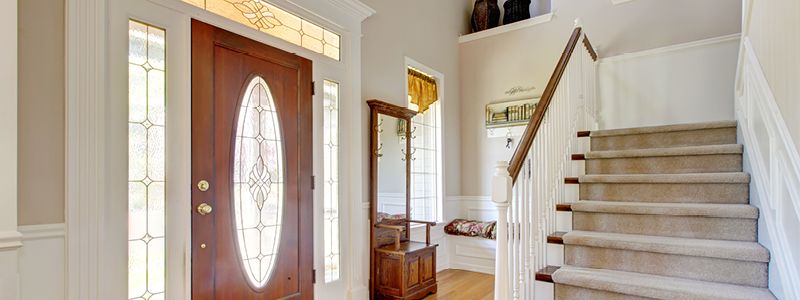
2. Accent Windows Lend Character
A beloved feature of many Victorians is the accent window placed to one side of a doorway. That little detail of artistic luxury remains a favorite that complements just about any architectural style—especially for off-center doorways. Go with traditional stained or leaded glass, or use a shaped window to repeat a motif. As an alternative to a full-length side lite, for example, decorative stationary windows still offer light and interest but a different placement and style perfect for positioning a statement piece of furniture or garden urn beneath them.
3. Updated, Upgraded Lighting Shines
All too often, standard builder-grade entryway lighting meets only minimum code requirements and does so with unremarkable, vanilla fixtures. By updating and upgrading, you can not only choose modern exterior lighting fixtures that will make your stylish doorway pop, but also select and even add locations for maximum impact and illumination. Just imagine the effect of trading a single wall-mounted sconce, for example, for a pair of oversized copper pendants with beveled glass designed expressly to diffuse light. With the generous selections our manufacturers offer, you can even coordinate lighting finishes and styles to complement your door’s hardware or vice versa.
4. Porches, Pergolas and Overhangs Extend and Define a Welcoming Area
To add weight to an entryway, use the columns of a porch or pergola to frame it and extend your home’s boundaries. The vertical posts and framing form another, broader threshold of hospitality that immediately brings guests under your roof. Architectural extensions like these can help to protect entryways as well as fixtures, hardware and visitors from the elements. They can also open the door for creativity and flair. Porches don’t have to be square, angular or even strictly linear. Overhangs can be as large or as small as the character of a home will allow. As for gardeners, what could be better than a pergola doorway on a midsummer day wreathed in climbing roses or fragrant jasmine?
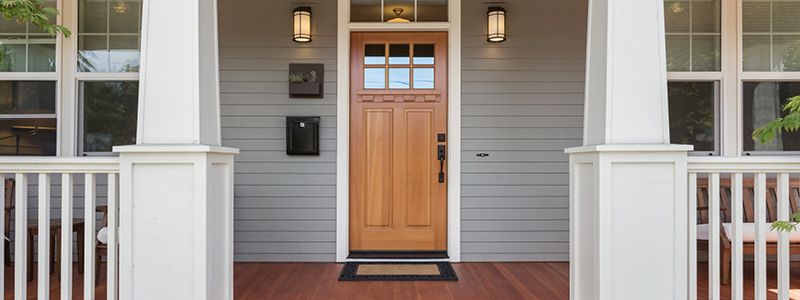
5. Railings Offer Safety and a Finished Look
If railings aren’t present, we often overlook the fact that perhaps they should be. However, even rises of just a step or two to an entryway landing tend to look unfinished without them. Railings prevent slips and falls on stairs and landings while simultaneously defining and accenting boundaries. The right style choices can set off chosen architectural elements, leading eyes and feet to that smart new door. Durable new composite and high-tech railing materials are designed to last the ages, and many lines even offer subtle, energy-efficient lighting options that include systems for stairs and walkways.
6. A Contrasting Facade Establishes an Architectural Focal Point
The versatility of architectural stone, masonry products, composite sidings and other building components provides a broad selection of materials that can be used to create or highlight a facade around an entryway. Selecting a complementary material that offers just the right amount of contrast to a limited or well-defined area can add interest to your entire home. Winning combinations often rely on neutrals for contrast or use an undertone present in other architectural elements. The balance of warm or cool tones, contrasts in textures and complementary patterns all play important roles in highlighting and celebrating your front door, the face of your home’s welcome.
7. Moldings and Millwork Convey Legacy Status
The impressive yet elegant hallmark assemblages of millwork and mouldings that make a door surround far more than the sum of its components have long been signature features of historic homes. Alone, each moulding strip, quarter round, cove base or crown may seem unimpressive. However, when combined to maximum effect with other millwork, the pediments, pilasters, casings and plinths become memorable architectural elements. The addition of just two mouldings and a smart design can elevate a doorway—and a home—to the next level.
8. New Interior Flooring Makes a Clean, Tight Sweep
One of the most common reasons for replacing a front door is that it no longer serves its intended purpose as a barrier against the elements. If moisture and rain have taken a toll on entryway flooring, this is the time to replace or repair it. Chances are, you’ll be replacing thresholds, sills, seals and maybe even trims anyway, so you’ll be able to lay your new weather-resistant hardwood planks, quarry stone or laminate right to floor’s edge. Equally important, the new sills and thresholds—as well as the sweep of the new door—can all be installed and adjusted to ensure a flawless, weather-tight seal.
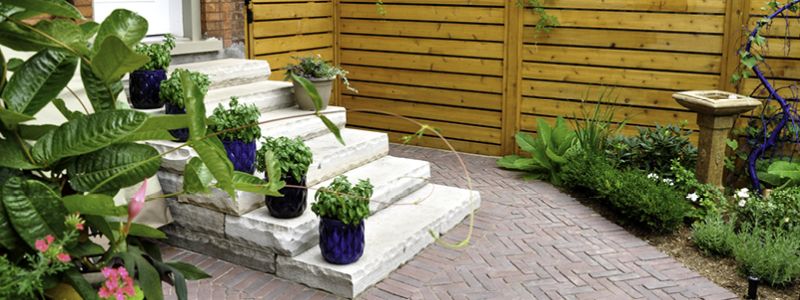
9. Hardscaping Paves the Way
At the very least, front door hardscaping includes steps and landings as well as the walkways or paths that lead to a front door. Just as a door replacement is a prime time to replace interior flooring, it’s also the perfect time to survey exterior flooring like porch boards, brick landings or other ground surfaces associated with your entryway. This is also the time to fix that step-and-a-half that’s always been too steep or to eliminate the awkward step down that always takes visitors by surprise. Pavers, masonry products and composite decking, for example, are just the beginning of your durable yet attractive material choices that can be used not only for walkways but also for built-ins like planters or benches.
10. Electronics, lighting and security measures are now smart finishing touches
Smart technology has transformed a number of old standards into modern necessities. For example, a smart doorbell with a camera can let you see who’s waiting, who’s been there, and whether anyone or anything is there right now—all without going anywhere near your brand-new door. Lighting has also gone smart, from walkway lighting and spotlights to smart floodlights with cameras. Adjust lighting from any electronic device, or have the security of being able to see who is at your home even when you’re not there.
Get Input From Engineering and Design Experts
One final tip: Input from experienced engineering and design experts is what can bring it all together. We want your new front entryway system to be as strong, graceful, functional and secure as you’re envisioning it will be.
Bring your ideas, preferences and questions, and let us show you the best of everything that our preferred manufacturers have to offer. Then, think bigger—about that extra, special feature or two that will complete your entry, the one that will make it a standout, the one that will be waiting to welcome you home.

